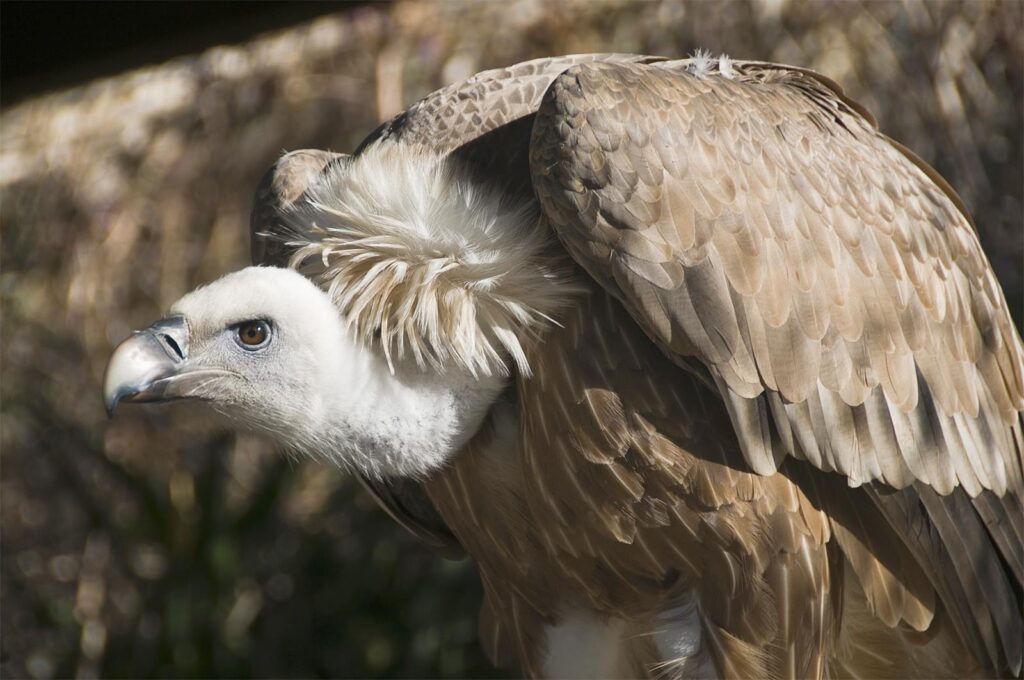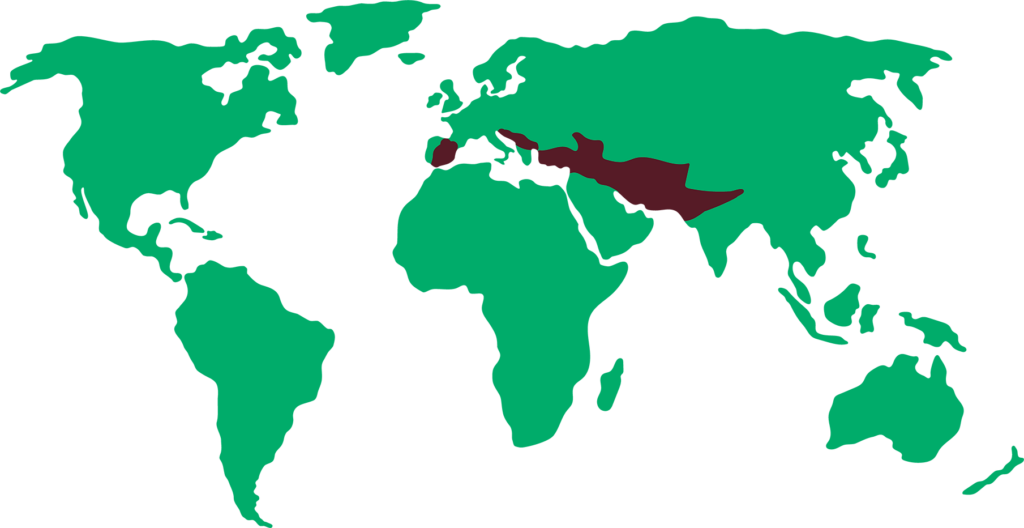GRIFFON VULTURE
Gyps fulvus

LENGTH

120 cm
WEIGHT

7,5 kg
LIFESPAN

60 years
The griffon vulture is one of the largest predatory birds to be found in Europe. Its wingspan can reach a length of 2.7 meters.
General characteristics
It is distinguished by its long white neck that is surrounded by a ruff of feathers. The head of the griffon vulture is small, in contrast to its bulky body. The feathers are ocher or cinnamon colored on most of its body, but near the tail and at the end of the wings, the shades are darker.
Its beak is hooked, like all birds of prey, and is used for tearing flesh. But the claws, although large, do not have long, sharp nails, which makes it difficult to hunt living animals.
Females are relatively larger than males and have a more rounded head.
Feeding
It is a carnivore that eat exclusively carrion.
Behaviour
Griffon vultures are gregarious. They form colonies on rocky cliffs, where they build the nests to protect themselves from predators. They are usually sedentary, but the youngest vultures leave an area when it is saturated, sometimes covering thousands of kilometers.
They are gliding birds that hardly move their wings in the air. Instead, they take advantage of updrafts caused by the sun. They usually fly up to 3,500 meters above sea level and travel long distances in search of food.
Griffon vultures have a highly developed sense of sight that allows them to locate carrion from miles away. They immediately warn the rest of the colony by doing spiral flights and in a short time, hundreds of vultures gather around the food.
They communicate by whistling, squawking and snorting while feeding or when they are in the nest.
Reproduction
They usually breed between December and April, making nuptial flights over the nest site beforehand. They lay a single egg which takes approximately 52 days fot the chick to come out. Both parents take turns incubating and caring for the chick.
Threats
Vultures in the wild are suffering from lack of food since the EU banned the abandonment of dead livestock in the countryside. On the other hand, they are also facing the habitat loss due to the construction of infrastructure and housing developments.
Distribution
It is found in most parts of Spain, North Africa and Western Asia. They inhabit all types of terrain, preferably mountainous, except in dense forests.

Did you know?
By feeding on animal carcasses, they are performing a sanitary function to prevent the spread of diseases caused by putrefying carcasses.
They can consume up to 10% of their own body weight in a single day. Sometimes they become so full that it is impossible for them to fly away.
They lack sweat glands and urinate on their legs to cool themselves on days of heat.
Conservation Status
